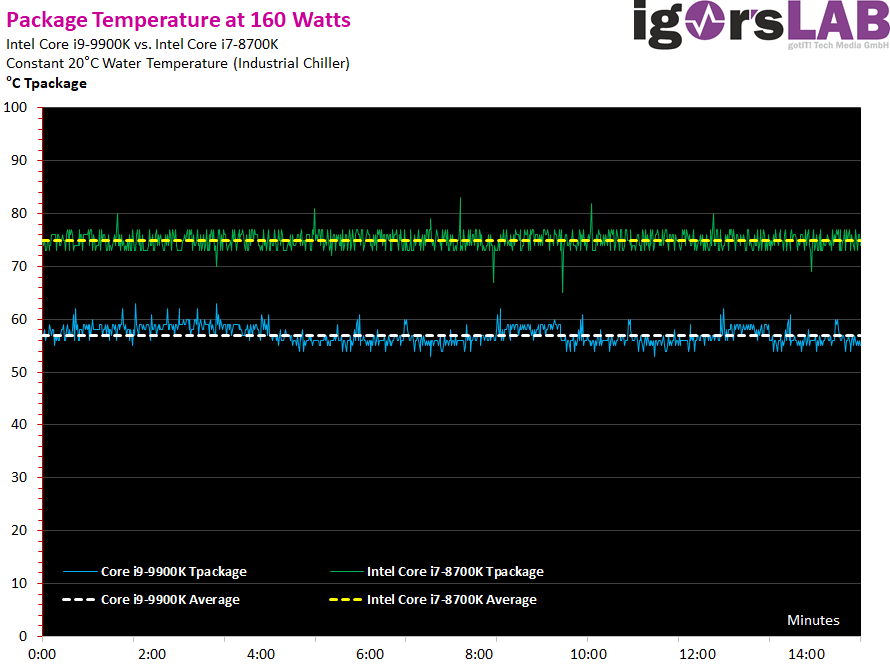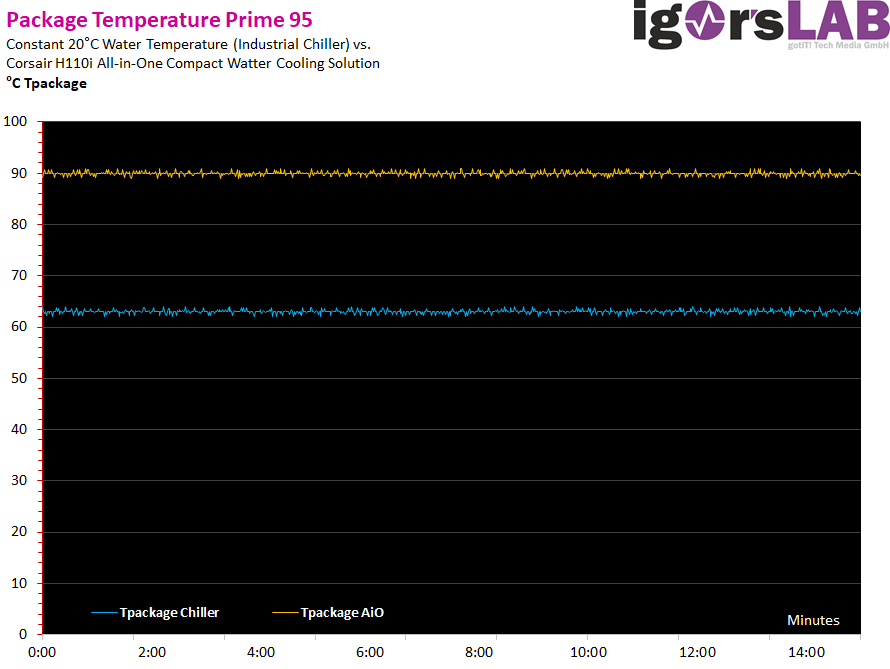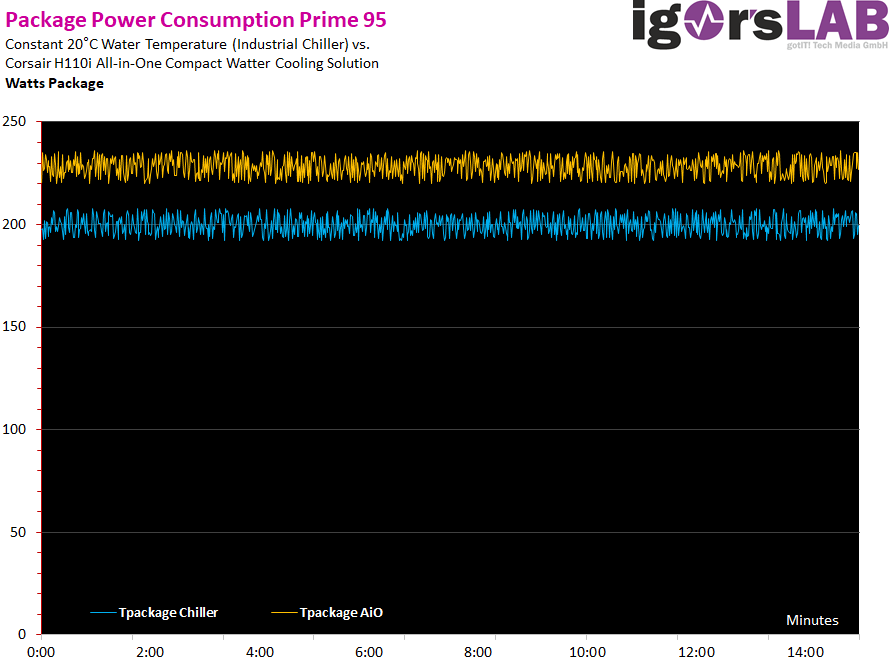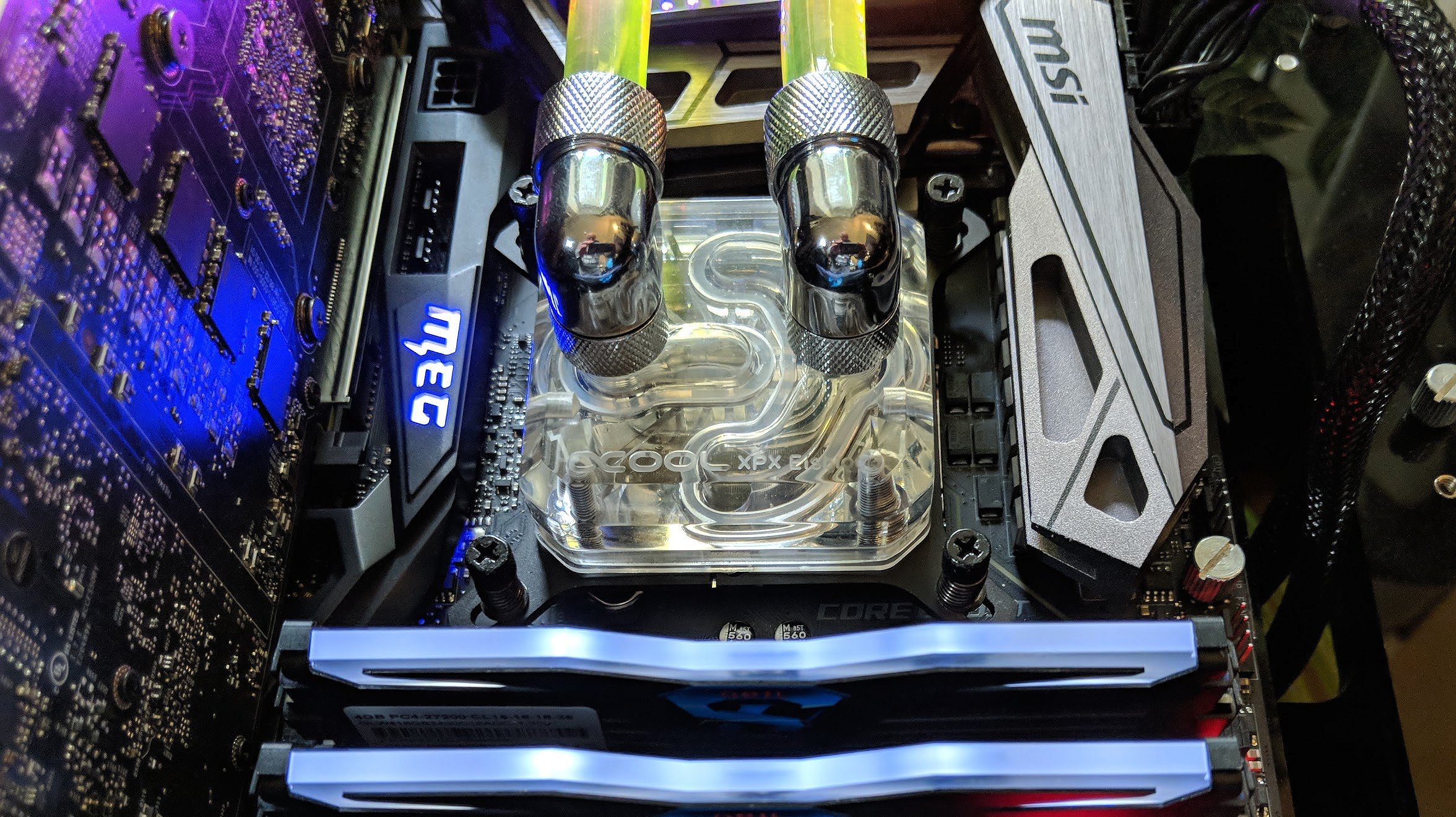As with the Intel Core i7-8700, we looked very closely again and created absolutely identical test and measurement conditions. We use the same type of CPU cooler (Alphacool XPX), with the Thermal Grizzly Kryonaut the same thermal paste and the Chiller (Alphacool Ice Age 2000) ensures exactly 20°C water temperature as always.
I measure the amount of heat paste (0.15 grams) required on the laboratory scale. This means that all older results are similar to those of the Intel Core i9-9900K.
Direct comparison of thermal paste against solder
However, I have to make an important preliminary remark about the change from the thermal paste TIM on the Core i7-8700K to the lot of the Core i9-9900K. Since the height of the CPU has remained absolutely the same, it can also be assumed that Intel uses the same heatspreaders as with the older CPUs. The distance between Die and Heatspreader was relatively large due to the design, since the thermal paste is also a relatively thick layer.
Therefore, one can assume that the solder layer is also a little thicker than one would have needed. This circumstance and the significantly smaller heatspreaders (surface) compared to the CPUs of the socket 2066 certainly explain why the following results are exactly as they have failed. Good, but not perfect.
The Intel Core i7-8700K reaches just under 160 watts during the stress test with Prime95, so I operated the Intel Core i9-9900K with an average very similar load. Since not all cores were always 100% busy with the Core i9-9900K, despite the same average waste heat over the entire time, there are slight fluctuations, which remain negligible. Logically, the Intel Core i9-9900K runs much cooler with solder instead of thermal paste:

With almost the same power dissipation and cooling conditions, we determine an average package temperature of 57°C for the Intel Core i9-9900K and 75°C for the Intel Core i7-8700K. This results in a delta of 18°. Tests of the beheaded Intel core i7-8700K show that this is not yet optimal, where the delta was even 2° degrees better at at least 20°. But as a gift, even the industrial solution with solder is always more suitable than that with the thermal paste of the previous CPU generation.
Leakage at different temperatures, but same load
However, it is also interesting how the temperatures and thus the leakage currents (and as a result the power dissipation) develop with the same attached load (workload), because CPUs are hot conductors in which the internal resistance decreases with increasing temperature and does not rise. To find out, we run the Core i9-9900K unclocked underPrime95 once with Chiller and once with a normal AiO compact water cooling (Corsair H110i).
The result is as expected. While the CPU with the chiller cooling at an average of 63°C cooks only slightly, the 90°C with the AiO are already in the absolute limit range. Mind you, unbeatable, but with AVX load. Interestingly, when using SSE, the delta of 27°C remains almost the same, because it is also 25°C on average.

But back to the AVX load, because what do the almost 30°C temperature difference ultimately mean for the power consumption? Here, too, we are somewhat amazed, because between the 205 watts with chiller and the 229 watts with the AiO compact water cooling, there are 24 watts difference, which we would attribute only to the now more occurring leakage streams.

We can see the remaining power consumption values on the next page, but under almost ideal conditions. The better the cooling, the lower the power consumption. However, we were only able to record these big differences at package temperatures above 80°C Celsius, which then rise almost avalanche-like.
Which also discourages air cooling, even if the Intel Core i9-9900K is nuptial. The 4.7 GHz all-core and a constant load are completely sufficient to lead the air cooling ad absurdum.
- 1 - Einführung und Architektur
- 2 - Security Patches, Testsystem
- 3 - Synthetische Tests
- 4 - AotS: Escalation, Civilization, DoW III
- 5 - Far Cry 5, GTA V, Hitman
- 6 - Shadow of War, Project Cars 2
- 7 - Office- und Browser-Benchmarks
- 8 - Adobe Creative Cloud
- 9 - Encoding und Kompression
- 10 - Workstation 2D/3D Grafik
- 11 - Workstation Compute/Rendering
- 12 - Temperaturen und Kühlung
- 13 - Leistungsaufnahme
- 14 - Zusammenfassung



































Kommentieren